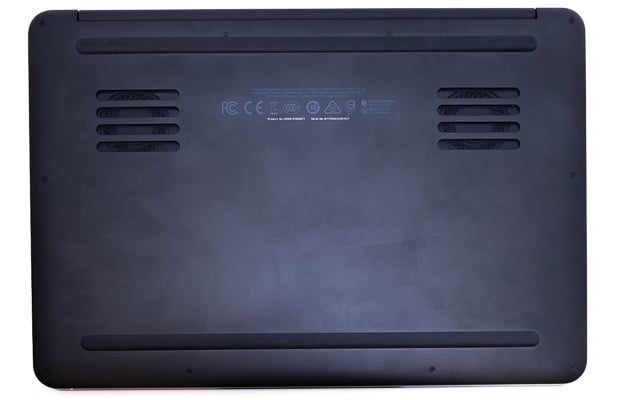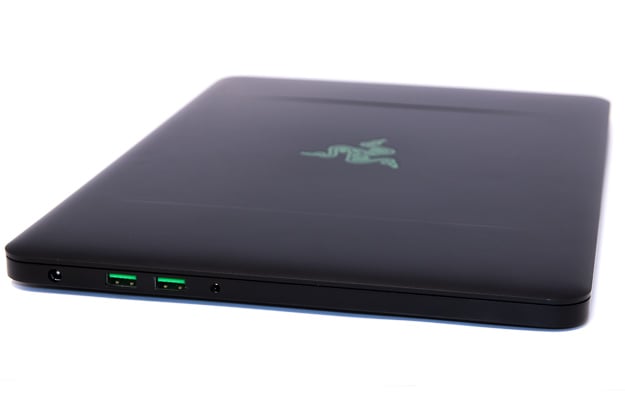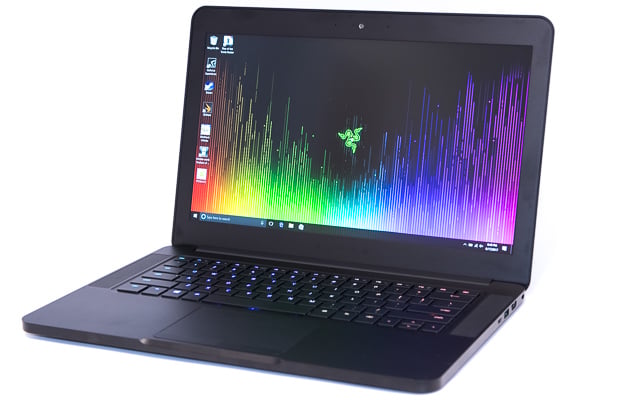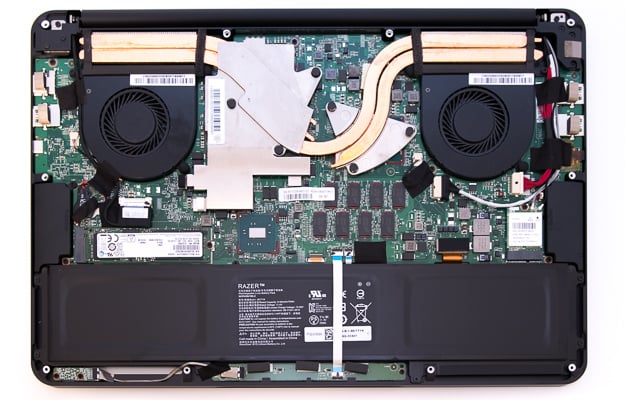Razer Blade 2017 Review: Solid Gaming Performance In An Ultrabook Form Factor
Now, there are a plethora of gaming notebooks to rival even the best desktops, though many of these are not easy to tote around and battery life is a distant afterthought. However, if you can temper your performance expectations just a touch - say to a more mainstream 1080p display resolution - a rising class of ultraportable gaming laptops is arriving to market and that's exactly the segment the newly refreshed 2017 Razer Blade is attacking.
These ultraportable machines typically build off the Ultrabook template with a super thin profile, streamlined port options, and meaningful battery life, then dial up performance with mid-range graphics options, higher octane processors, and a flash of style. They're efficient enough to make it through a school or work day, and thin enough to toss in a backpack, yet still powerful enough to tackle AAA titles. If this sounds appealing to you, the 2017 Razer Blade has the potential to deliver the goods.
For Razer's part, they seem to have settled on their formula with the Blade. This year's model is more of a refresh than a redesign, with better processing and graphics performance while keeping the asthetics near identical. No complaints here - the Razer Blade continues to be a sleek looking and well crafted notebook.
The 2017 model steps up to an Intel Kaby Lake Core i7-7700HQ HyperThreaded quad-core processor clocking in at 2.8GHz base and 3.6GHz turbo along with an Nvidia Pascal-based GeForce GTX 1060 GPU with 6GB of GDDR5 memory strapped in to handle high resolution textures with ease. Our unit shipped from Razer with 16GB of 2400MHz DDR4 memory and a 256GB PM951 solid-state drive from Samsung. We would probably opt for a higher capacity drive ourselves, but it should serve just fine for many mainstream users. Our unit also has a 1080p matte-finish, non-touch IPS display which should get the job done for most gamers, though maybe missing a few pixels for those working in apps for content creation and the like. Regardless, higher resolution displays do look great but Windows does not always not know how to scale many applications correctly - and FHD is plenty sharp at 14-inches.
As configured, our unit clocks in at a hefty $1899. However, check out the full specifications below because it's packing some potency for its price tag...
|
 |
You might be tempted to dive right into performance, but first let's take a quick tour of the chassis.
The Razer Blade is constructed from milled aluminum with an anodized matte-black finish. It is very smooth to the touch with a subtle softness. The lid is punctuated only with Razer's iconic acid green logo - backlit - and two slight ridges running along either side. As great as it looks out of the box, the finish readily absorbs skin oils, so fingerprints will show and they are tough to clean up at times.
The bottom of the notebook is similarly monochrome. It has two long rubberized feet running along the front and back edges for stability and two mesh covered vent areas for cooling. Ten torx screws along the perimeter permit easy access to the interior for SSD upgrades.
The left edge of the Blade offers DC-power in, two green accented USB 3.0 Type-A ports, and a 3.5mm headset jack.
The right edge provides a Kensington lock point, HDMI 2.0, another USB 3.0 Type-A port, and a Thunderbolt 3 Type-C port. This Thunderbolt 3 port can be used with the optional Razer Core GPU dock to further augment the Razer Blade's performance. We do not have one for review at this time.
The front and rear edges are effectively featureless - we are sorely missing an SD card slot - so let's go ahead and crack open the lid. Lifting the lid only takes a single finger, by the way, always a sign of thoughtful engineering.
The display, though thicker on bezel, greets us with a webcam where it should be - above the screen. The panel has good, though not outstanding, brightness with the exceptional viewing angles IPS screens are known for. Those large bezels are looking a bit dated, unfortunately. We would really like to see the screen size stretched out to better utilize the space. The Razer Blade's display is respectable and highly functional but unlikely to draw much envy with OLED options in the market or high refresh rate panels.
Below the sturdy one-finger hinge, the Razer Blade throws quite a party as rainbow colored LED lights dance across the keycaps. The LED lights are fully configurable with Razer's Chroma software - more on that later. The keys are chiclet style with short but decent travel and pleasing tactile feedback.
While kinesthetically pleasing, the layout is not without compromises. For starters, the keyboard has no list/dropdown menu key which is replaced instead with a second Fn key. At first glance, it also lacks Home, End, Page Up and Page Down keys but thankfully these functions are available with a press of Fn plus the left, right, up and down arrow keys respectively.
A more critical omission for many is the absence of a 10-key which simply would not fit without also shrinking down the keyboard. Razer has opted to instead fill the space on either side with sizeable stereo speakers. The power button is situated in the center above the keyboard and the trackpad sits below. The trackpad is a good size and feels responsive, though the keys are a touch slender and easily missed with a slightly sharp upper edge you'll notice if you drag your finger across it. Palm rejection works perfectly; we've experienced no issues with false triggers.
Let's crack open the Razer Blade by removing the ten Torx screws. The process is very simple and involves no additional plastic clasps or anything else.
The interior is very accessible. Three heat pipes pull heat away from the CPU with a fourth heat pipe beginning over the GeForce GTX 1060. Two blower style fans bring cool air in from the bottom and exhaust over the heat pipes and out the back towards the hinge. The 70Wh battery occupies approximately the front quarter layer.
Zooming in on the M.2 drive and memory reveals good and bad news. As expected, the SSD is user replaceable which is great news for anyone looking for a storage boost down the road. Unfortunately, the 16 GB of RAM is embedded right into the system board which kills any hopes of future upgrades or replacements in the event of failure. It is a shame because it seems to us that there is enough space to include actual SO-DIMM slots even if the z-height is not particularly apparent in the picture.
Regardless, the Razer Blade is exceptionally well-constructed. The lid has only a slight flex and remains securely where positioned while the lower half offers no distortion whatsoever. We are not about to test it, but it certainly feels like it could take a drop or two and keep on ticking. Its sturdiness is on par with the build quality of Dell's highly praised XPS 13, my personal machine, which has seen its share of drops without complaint.



















